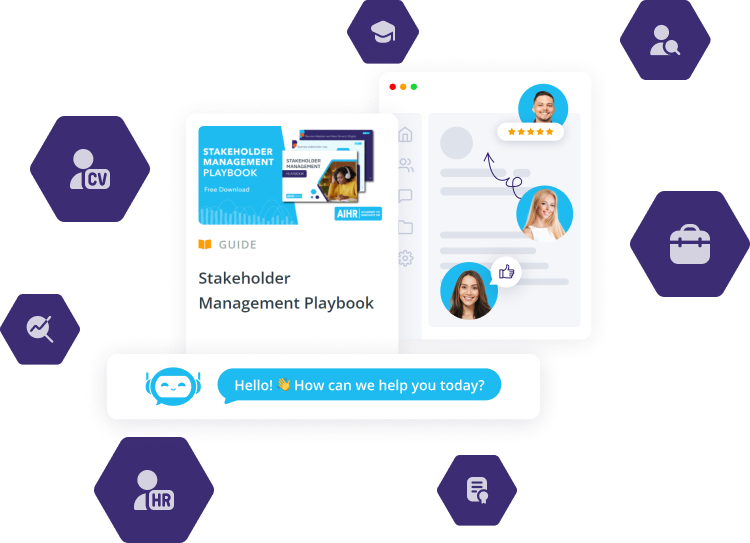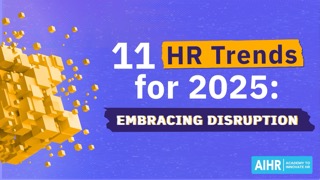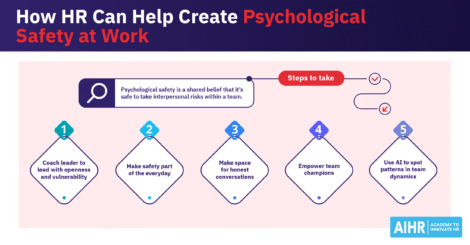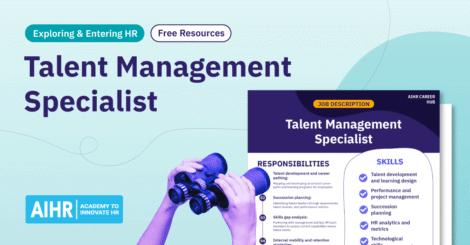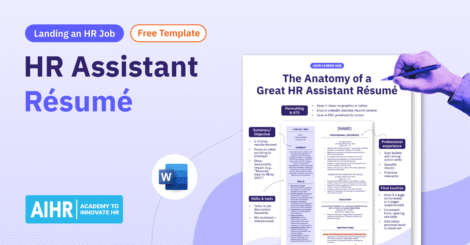While a people first culture is a smart business move, only 20% of employees feel truly connected to their workplace culture. This points to a common gap between what leaders believe they’re achieving, and employees’ actual experiences.
To fix that, companies must create a culture that empowers and supports employees through intentional leadership, inclusive systems, and an environment focused on wellbeing. This article explains what a people first culture is, why it matters, and the steps you should take to create such a culture at your organization.
Contents
What is a people first culture?
Five key pillars of a people first culture
Why a people first culture matters
HR responsibilities in a people first approach
Building a people first culture: HR skills you’ll need
13 steps to create and sustain a people-first culture
What is a people first culture?
A people first culture (also called an employee first culture) is a workplace philosophy that prioritizes employee wellbeing, development, and engagement over short-term profit and rigid hierarchies. This doesn’t mean ignoring business outcomes but instead, acknowledging that when your workforce thrives, so does the organization.
In fact, according to Gallup’s Global Organizational Culture Indicator, employees who feel a strong connection to their company’s culture are:
- 4.3 times more likely to be engaged at work
- 5.3 times more likely to recommend their organization as a great place to work
- 62% less likely to feel burned out often
- 47% less likely to be looking for another job.
5 key pillars of a people first culture
To build a people first culture, you must first familiarize yourself with the following key pillars of such a culture:
1. Purpose
Employees need to find meaning in their work — a clear connection between their responsibilities and the organization’s mission, values, or broader social impact. This drives motivation, aligns personal goals with organizational objectives, and encourages staff to bring energy, creativity, and commitment to every task.
2. Belonging and inclusion
A workplace where everyone feels welcomed, respected, and heard fosters a strong sense of belonging, builds connection and trust, minimizes isolation, and improves collaboration. Inclusive cultures shouldn’t be diverse only on paper — they ensure every voice matters, and that employees feel safe to be themselves.
3. Learning and development opportunities
People first organizations provide employees with access to training, mentorship, and opportunities for personal and professional growth. Clear career pathways signal that the company is invested in its people and their development, while a culture of learning encourages curiosity, adaptability, and ambition.
4. Wellbeing
A people first culture should actively support the physical, mental, and emotional health of its employees. This includes promoting work-life balance, flexible work arrangements, and mental health resources that make people feel cared for. This, in turn, leads to a more engaged, present, and resilient workforce.
5. Recognition and appreciation
Work should feel rewarding, not just in compensation but in spirit. People first leaders create space for this by recognizing and rewarding outstanding work, celebrating achievements, and encouraging regular acknowledgements of staff efforts. This also results in higher employee retention and lower turnover rates.
Why a people first culture matters
A people first culture addresses the root causes of burnout, disengagement, and high turnover by prioritizing employee wellbeing, growth, and belonging. Instead of focusing solely on output, it focuses on the conditions that help people thrive (e.g., flexibility, purpose, and mental health), which drive performance and retention.
When employees feel seen, supported, and included, they’re more likely to be engaged and productive. A strong culture requires leadership to model it regularly, inclusive systems, and consistent reinforcement across the employee experience.
Organizations that invest in people as whole individuals see stronger results, because employees who feel valued are more committed and better equipped to contribute meaningfully to the company’s success.
HR responsibilities in a people first approach
Below are the main responsibilities HR must assume when establishing a people first culture in the workplace:
Connecting leadership and employees
The HR team must translate decisions into action and ensure employees are heard. Whether it’s new policies, major changes, or crisis management, HR helps leadership understand how decisions affect people and helps individuals navigate change.
Setting the tone through core HR functions
HR must show what “people first” looks like in their core functions, such as:
- Recruitment and onboarding: Hire for values, not just skills. Make sure new hires feel included from day one.
- Policies and benefits: Rework rules to reflect real needs, like flexible PTO for caregiving or burnout prevention.
- Learning and development: Build fair growth paths, and let employees help shape their own development plans.
- Performance management: Instead of rigid reviews, focus on feedback, coaching, and development tied to values, not just results.
Championing trust, transparency, and fairness
Leading with integrity, communicating clearly, and ensuring fair practices can increase employee engagement. This could mean holding regular stay interviews or getting employee feedback when choosing new HR tech. The goal is to ensure solutions work for real people, not just in theory — this builds ownership and shared accountability.
Learn to create, implement, and maintain a people first culture
To help your organization maximize retention, engagement, and motivation, and minimize turnover, you must build the skills to foster a people first culture.
✅ Create a culture aligned with your business’s vision, mission, and core values
✅ Successfully implement a culture change at your organization
✅ Ensure alignment between leaders’ roles with the current or desired culture
✅ Explore the different factors that affect the process of intercultural management
Learn at your own pace with the online Talent Management & Succession Planning Certificate Program and progress on your own terms.
Building a people first culture: HR skills you’ll need
Creating a people first culture requires a broad, sophisticated skill set. Below are the core competencies you’ll need to build and sustain a people first organization successfully:
Strategic thinking and organizational design
It’s essential to be able to connect company culture to business outcomes. This includes aligning people strategy with organizational goals, designing scalable people systems, and structuring teams to support agility, inclusion, and growth.
Influence over leadership
A people first approach often means challenging traditional mindsets. You’ll need strong influencing skills to gain buy-in from executives, guide cultural transformation, and advocate for policies that prioritize employees—even when that means driving change at the top.
Emotional intelligence and empathy
Empathy is crucial in a people first approach, and HR leaders must demonstrate compassion in decisions, feedback, and conflict resolution. This means managing with both head and heart, creating safety, and building trust across the business.
Change management and agility
Transforming culture involves shifting behaviors, systems, and mindsets. To handle this efficiently, you need the ability to manage change sensitively and continuously, adapting your people first initiatives in tandem with the changes.
Data literacy and knowledge of cultural metrics
Data literacy helps you make thoughtful, evidence-based decisions that put people at the center. Use engagement data, feedback loops, turnover trends, and DEIB dashboards to assess cultural health and make data-informed improvements that reflect your people first values.
Coaching and development skills
In a people first organization, the HR function must support not only compliance but also coaching and development. Equip leaders and teams with the mindset, feedback tools, and career development opportunities they need to thrive.
Communication and storytelling
To foster a people first culture consistently and sustainably, you must articulate your vision across all levels of the organization. Use internal campaigns, narratives, and everyday conversations to illustrate core valus and maximize buy-in from everyone.
Collaboration and cross-functional relationship-building
Maintaining an effective people first culture requires HR to ensure strong relationships across all departments. This way, the mindset becomes part of how the company operates, from marketing and finance to frontline teams
HR tip
Take 10 minutes to complete AIHR’s self-reported T-Shaped HR Assessment to see where you stand. AIHR’s unique T-Shaped model measures skills in Business Acumen, Data Literacy, Digital Agility, People Advocacy, and Execution Excellence. You can find out how your skills measure up to your HR peers’, and identify areas of development to help you build the necessary skills to lead a people first culture.
13 steps to create and sustain a people-first culture
If you’re keen to help your organization build a people first culture, the following 13 steps can help you lead this change:
Step 1: Establish visible, people-centric core values
Establish a clear set of organizational values that prioritize the respect, inclusion, wellbeing, and growth of your workforce. Next, communicate these values consistently, and ensure you incorporate them into your company’s hiring process, performance management system, and everyday decision-making.
Step 2: Train leaders to practice empathy and active listening
A people first approach must begin at the top. Train managers to lead with compassion, curiosity, and humility, helping them develop the skills to truly listen and respond to employees with care and fairness. This will assure employees that they are supported, which will boost trust, motivation, and job satisfaction.
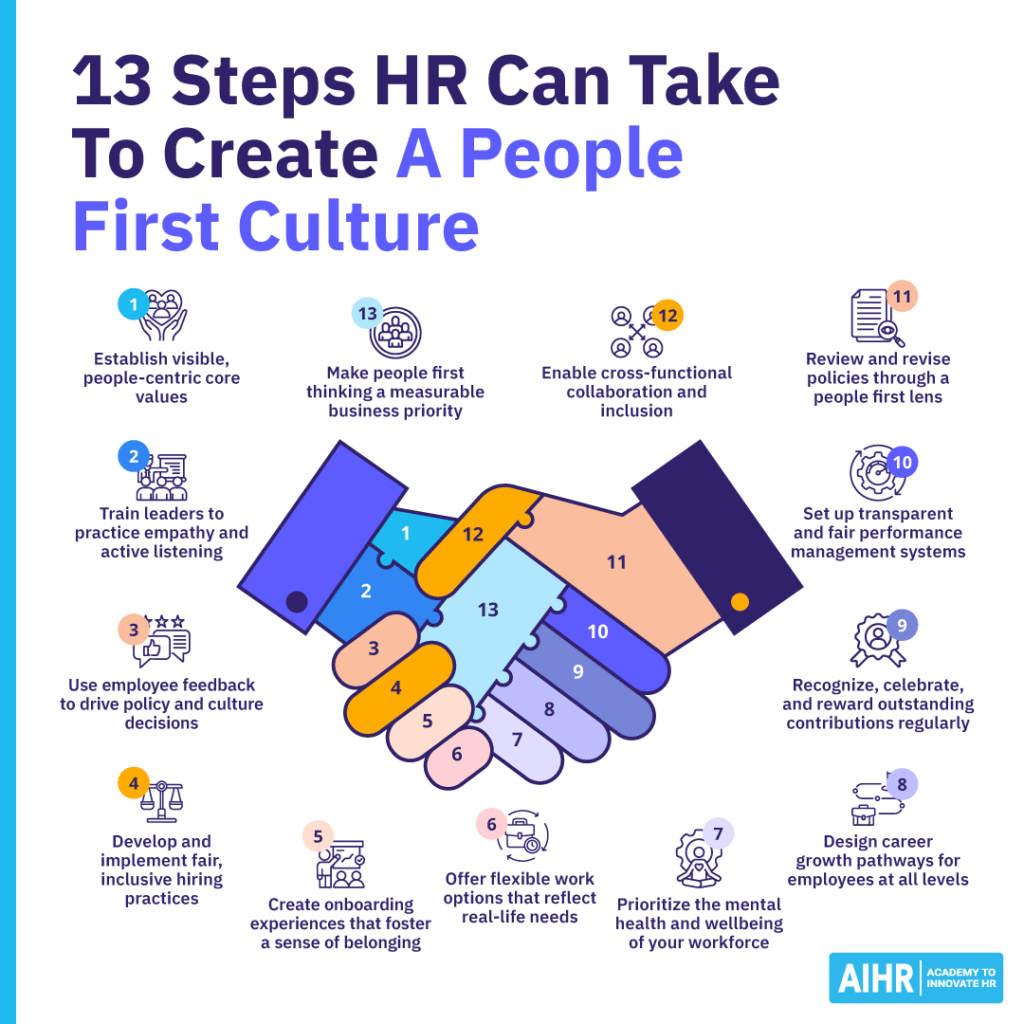
Step 3: Use employee feedback to drive policy and culture decisions
Schedule regular surveys, listening tours, or focus groups, and be sure to act on the feedback you get. Putting people first means treating feedback as insight, not an obligation. Being able to see how their input shapes decisions can help employees feel included and respected, motivating them to be further invested in their work.
Step 4: Develop and implement fair, inclusive hiring practices
Fair, inclusive hiring practices are crucial to a people first culture — they help ensure equal opportunity to succeed, which builds trust, diversity, and long-term engagement. Minimize bias, design recruitment processes that prioritize cultural contribution over mere culture fit, and diversify your organization’s hiring panels.
Step 5: Create onboarding experiences that foster a sense of belonging
Your company’s onboarding process shouldn’t just cover tasks but also instill workplace culture in new hires. They should end their first week feeling like part of the team, understanding how their role connects to the organization’s purpose, and being clear on the support they’ll receive as they grow professionally.
Step 6: Offer flexible work options that reflect real-life needs
Employees have different responsibilities, lifestyles, and challenges outside work. Recognizing this and allowing flexibility (e.g., remote work, adjusted hours, or compressed weeks) accommodates people’s lives, reduces stress, and helps them perform at their best. It also signals that the company values people as individuals, not just workers.
Step 7: Prioritize the mental health and wellbeing of your workforce
Make employee wellbeing a key component of company culture by normalizing conversations on mental health, and offering relevant support resources. At the same time, train managers to spot signs of burnout or distress, and encourage staff to speak up if they are struggling personally or professionally.
Step 8: Design career growth pathways for employees at all levels
A people first culture creates room for growth — not just for high performers or top talent, but for everyone. Provide clear, transparent career paths, mentorship programs, and access to development opportunities for employees at all levels of the organization. This shows the company values their long-term development, which in turn drives motivation.
Step 9: Recognize, celebrate, and reward outstanding contributions regularly
People who feel seen at work are more likely to perform better and remain at their jobs. Build systems and rituals that acknowledge both individual and team wins, even if they may seem small. At the same time, you could celebrate milestones and contributions in authentic ways aligned with company culture.
Step 10: Set up transparent and fair performance management systems
A people first culture ensures performance management is based on feedback, coaching, and development, not fear or bureaucracy. Use data and dialogue to ensure every employee knows what success looks like, how they can achieve it, and that they can expect transparency and fairness across the company.
Step 11: Review and revise policies through a people first lens
It’s important to assess whether your organization’s policies truly benefit its people. Review and revise leave policies, dress codes, and disciplinary procedures (if necessary) to consistently foster dignity and equity. Doing so can help your company’s policies reflect modern workplace realities.
Step 12: Enable cross-functional collaboration and inclusion
Breaking down silos is necessary to enable cross-functional collaboration and inclusion. Create opportunities for people across functions, locations, and levels to collaborate and build meaningful relationships. This strengthens trust, encourages knowledge-sharing, and helps everyone feel connected to the bigger picture.
Step 13: Make people first thinking a measurable business priority
Embed people first goals into your organizational KPIs. Measure employee engagement, retention, wellbeing, and development. Additionally, be sure to hold leaders accountable for cultural outcomes, not just financial goals. This makes building a supportive, inclusive culture a business priority, not just an HR initiative.
To sum up
Creating a people first culture shouldn’t be just a once-off initiative, but a continuous commitment to aligning systems, behaviors, and decisions with the needs of your people. HR plays a crucial role in realizing this, translating values into action and ensuring employees feel connected, heard, and supported at every stage of their journey.
Reflect on where your company culture stands, identify any gaps, and take deliberate steps to build an environment where people thrive. An organization that puts people first will likely benefit from high performance and positive business outcomes.


